What Are Walls | What Is Interior Walls | 25 Types of Wall | Types of Interior Wall Materials | Types of Wall Construction | Types of Load Bearing Wall
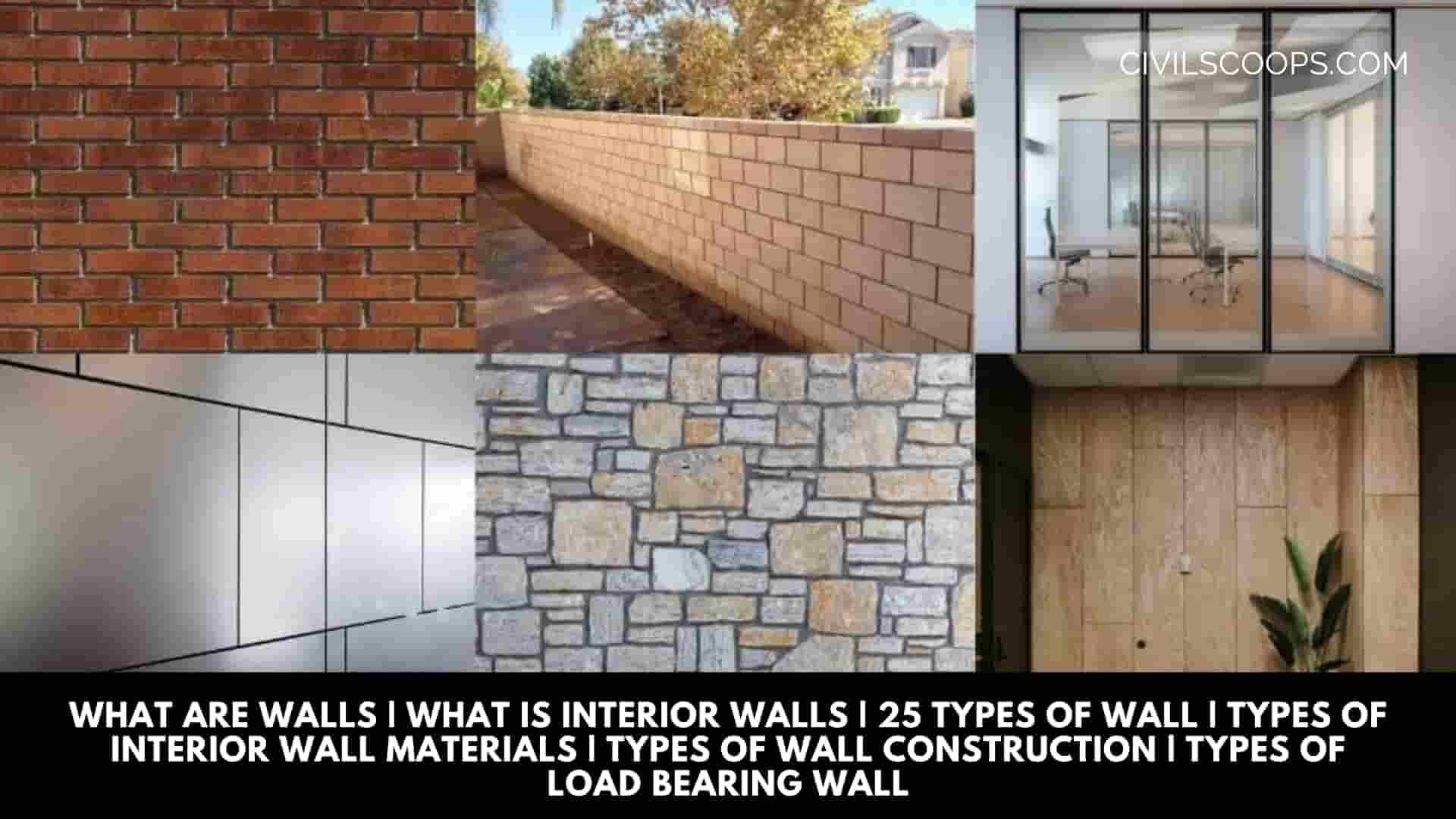
Table of Contents
What Are Walls?
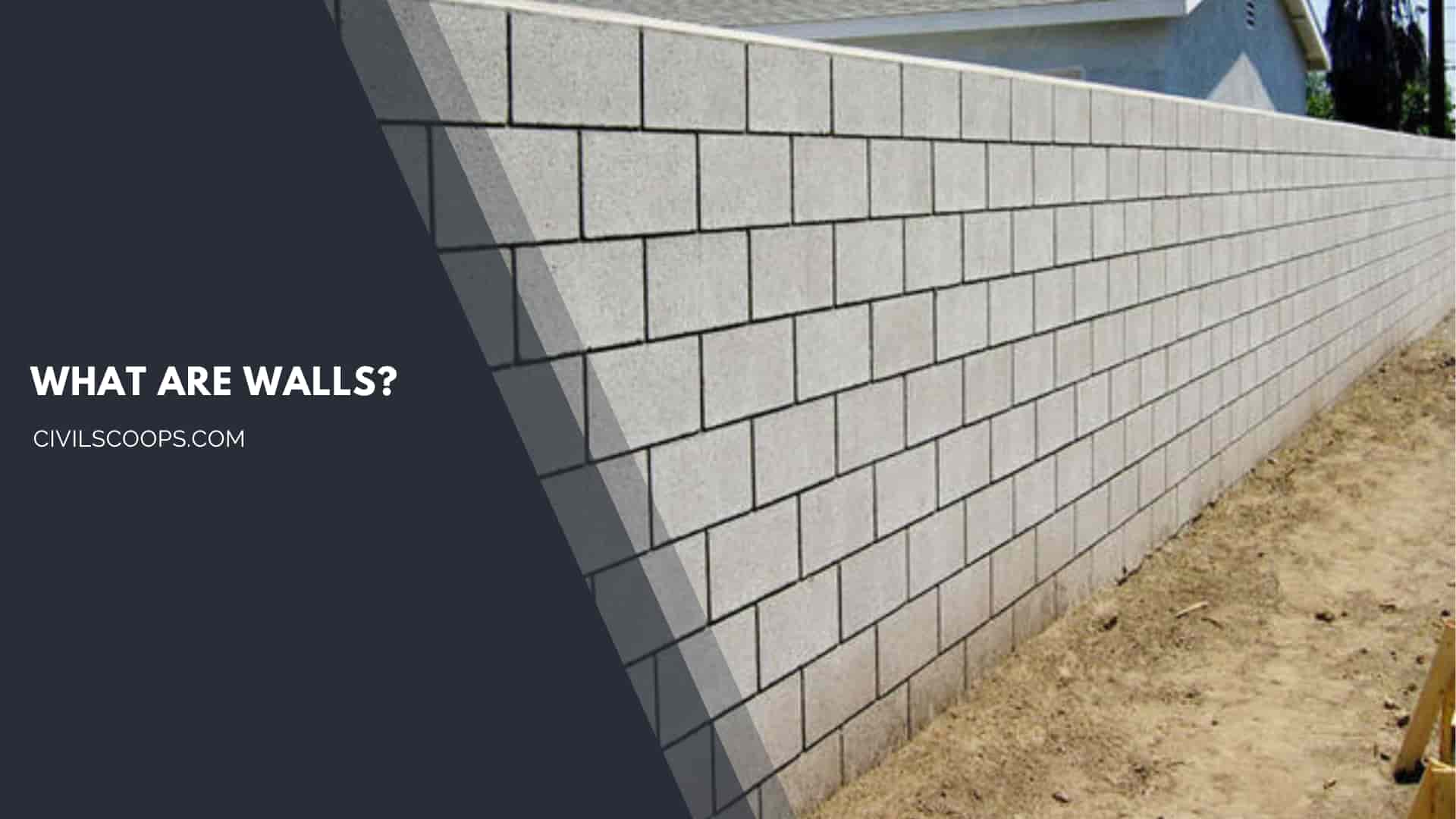
A wall is a structure and a surface that defines an area, carries a load, provides security, shelter, or soundproofing, or, is decorative.
There are many kinds of walls, including Walls in buildings that form a fundamental part of the superstructure or separate interior rooms, sometimes for fire safety.
What Is Purpose of Wall?
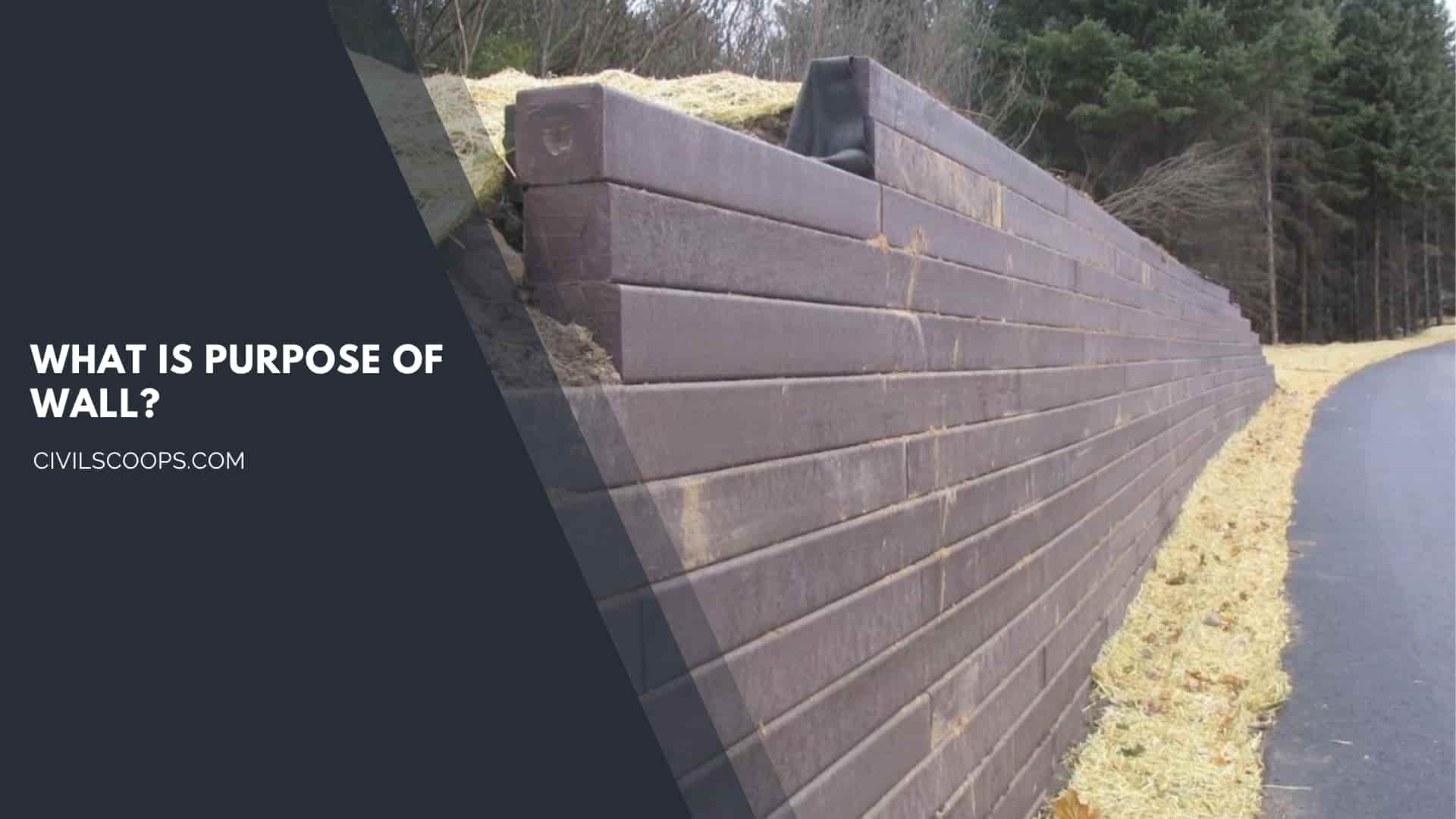
- Wall is a structure that defines the area.
- It defines the boundaries of an area.
- It carries the load of the roof slab.
- It provides security and privacy.
- It is used as a soundproof material.
- It’s one of the most important superstructures in buildings.
What Is Interior Walls?
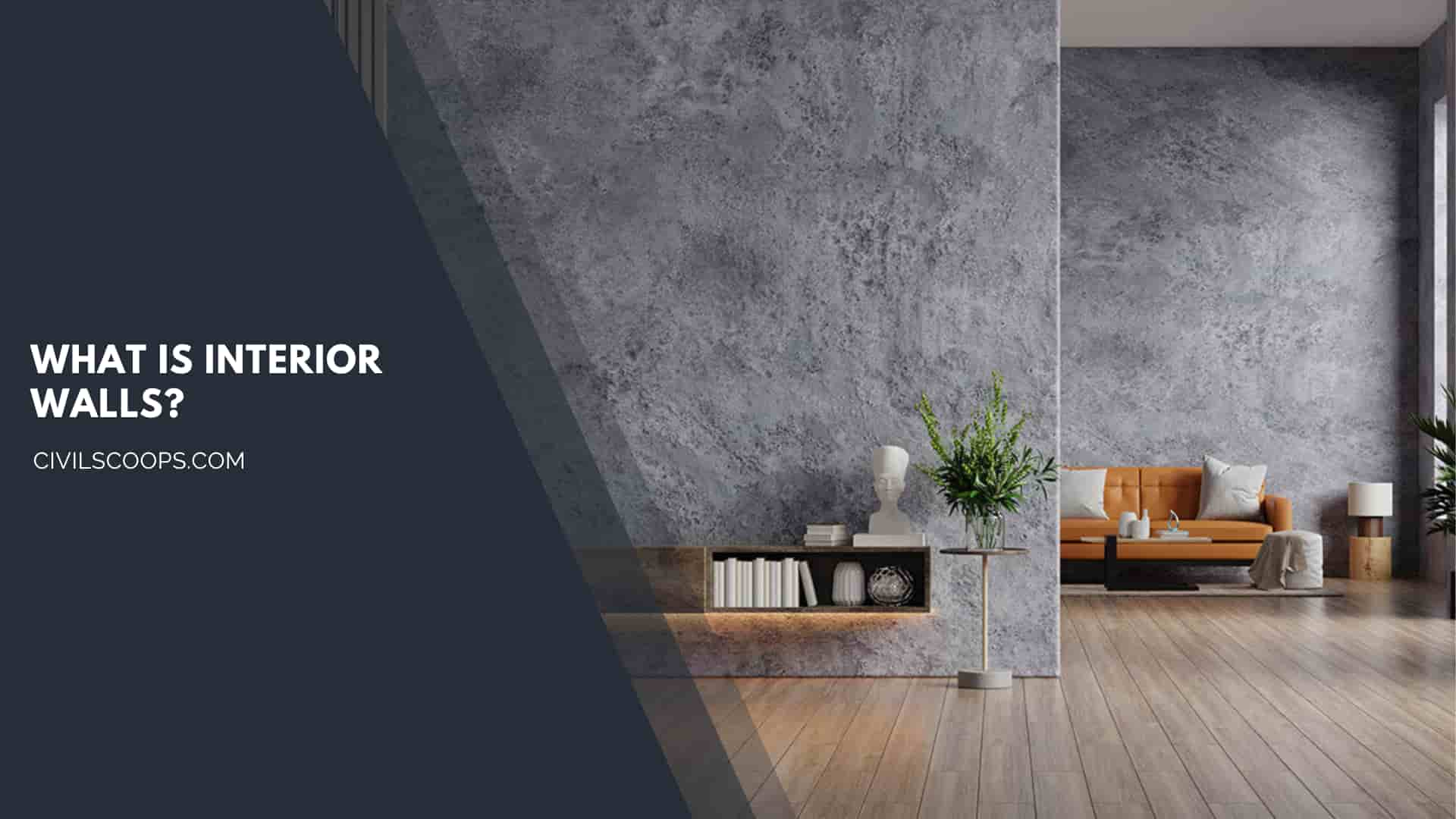
Interior walls consist of both load-bearing walls and walls that don’t bear weight, called partition walls.
Both types of walls employ similar framing standards, but a load-bearing wall is typically located directly above another load-bearing wall, a beam, or a structural column.
- The interior wall provides safety, security, and privacy.
- It creates a partition and transforms a large room into two small rooms.
- The interior walls are nicely decorated, which gives the aesthetic beauty of that room.
- It’s used as a platform for hanging materials, pictures, or other decorative materials.
Types of Interior Wall Materials
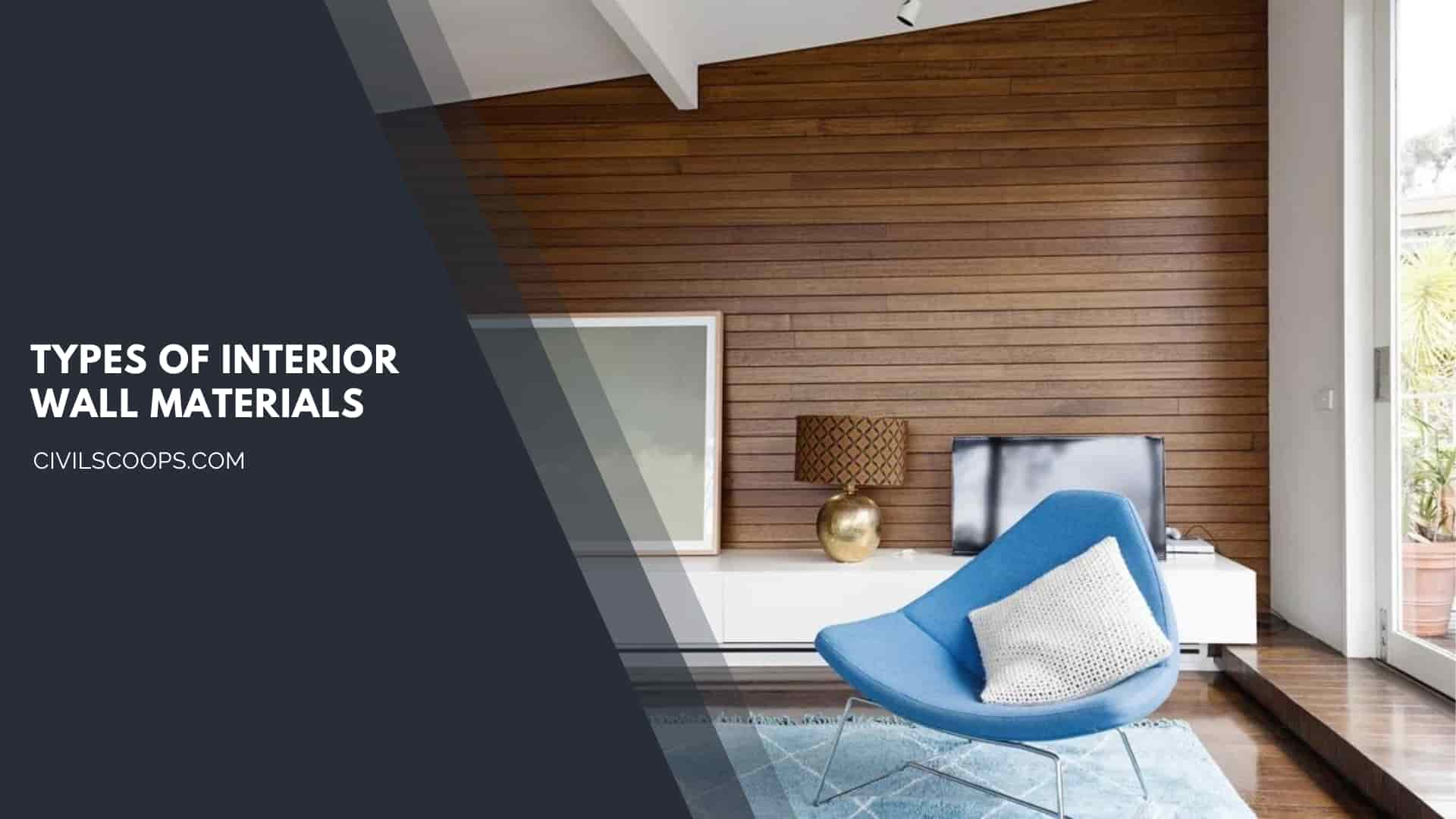
There are different types of materials are used to construct a wall. Some of them are-
- Brick Wall.
- Stone Wall.
- Glass Wall.
- Wood Wall.
- Plywood Wall.
- Cinder Blocks Wall.
- Metal Sheet Wall.
1. Brick Wall:
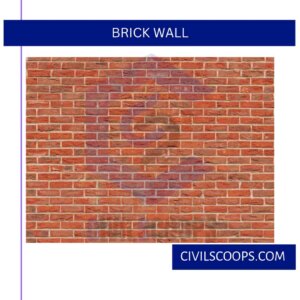
Brick is mainly used as wall material because it’s very easy to use and economical. A contemporary brick wall is typically made of clay, concrete, or calcium-silicate bricks.
The most common brick size is 215mm (L) x 102.5mm (W) x 65mm (H). Bricks are bound together by a cementitious or lime mortar, usually 10mm thick for the horizontal (bedding) joints and 10mm wide for the vertical (perpend) joints.
2. Stone Wall:

In ancient times stone is used as a wall material. Stone walls are usually made of local materials varying from limestone and flint to granite and sandstone.
However, the quality of building stone varies greatly, both in its endurance to weathering, resistance to water penetration, and in its ability to be worked into regular shapes before construction.
3. Glass Wall:
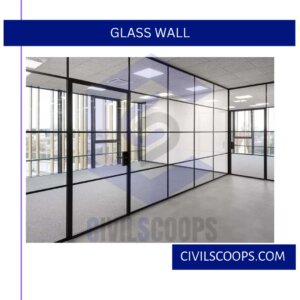
Now a day glass is a very useful material. Architectural glass is used as a building material. It is most typically used as transparent glazing material in the building envelope, including windows in the external walls.
4. Wooden Wall:
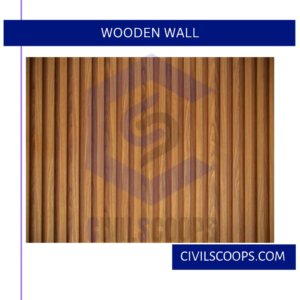
Hardwoods are commonly used in the construction of walls, ceilings, and floors, while softwoods are often used to make doors, furniture, and window frames.
Some examples of the most popular hardwoods include oak, maple, mahogany, cherry, walnut, and teak. Wood is used as a wall material, and it’s quite a bit expensive, but the durability & longevity of wood is extremely good.
5. Plywood Wall:
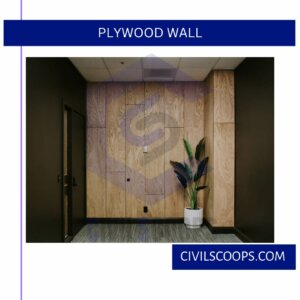
It is not as durable or easy to work with as drywall. These thin sheets of wood are bonded together with an adhesive.
Plywood is not visually appealing which is another one of its drawbacks as a wall material, however, it can still be used as one. It’s used in Interior wall materials.
6. Cinder Blocks Wall:
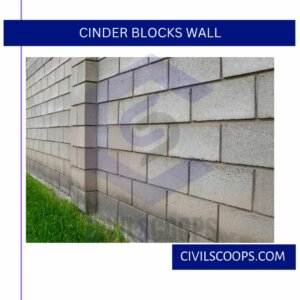
It’s used as a soundproof barrier, and it’s economical. Concrete blocks are prefabricated materials mainly used to build walls.
Like bricks, the blocks are stacked together and joined with a mortar, usually consisting of cement, sand, and water. The blocks are hollow inside to allow for steel bars and mortar filling
7. Setal Sheet Wall:
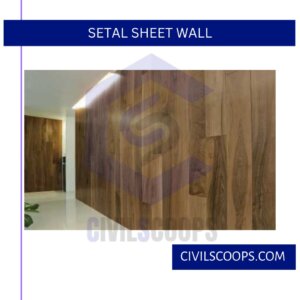
It’s quite expensive but the durability of this type of Sheet is high. Steel has a notable immense strength that offers a great advantage to houses. Another vital feature of sheets is their flexibility.
Yes, it bends easily without cracking even if subjected to an external force. They come in a wide range of finishes and gauges so fashioning its walls is easy.
It has been the ideal material for a long time in industrial buildings but lately, it is also a popular choice for many contemporary and modern houses. The series of significant advantages against the other materials makes projects look more exciting and exceptional.
Types of Wall Construction
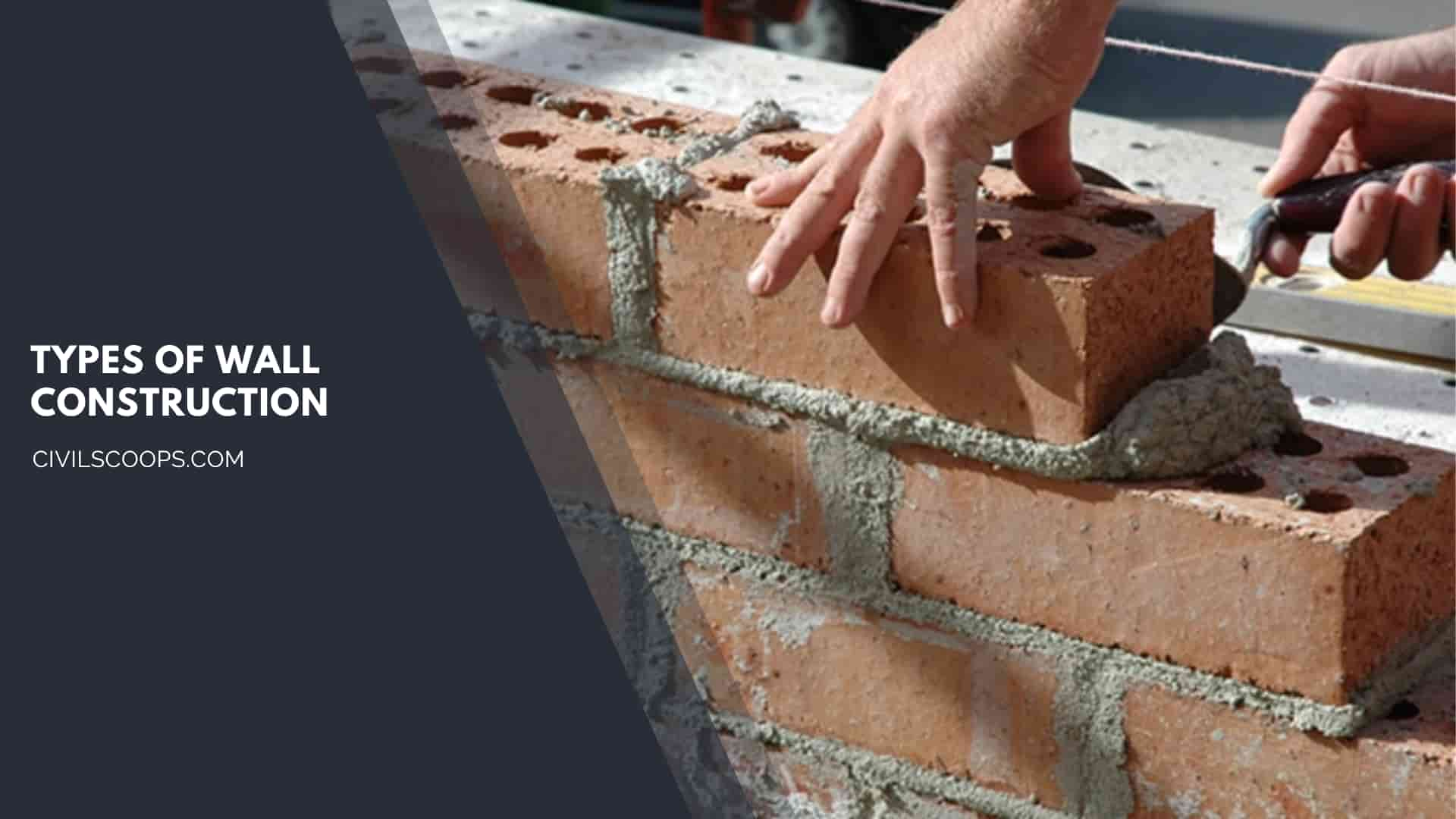
There are various types of walls used in civil construction. Here are some examples of those walls
- Load Bearing Wall.
- Non-Load Bearing Wall or Drop Wall.
- Shear Wall.
- Retaining Wall.
- Brick Masonry Wall.
- Rubble Stone Masonry Wall.
- Core Wall.
- Precast Wall.
- Parapet Wall.
- Boundary Wall.
- Reinforced Brick Wall.
- Cavity Wall.
1. Load Bearing Wall:
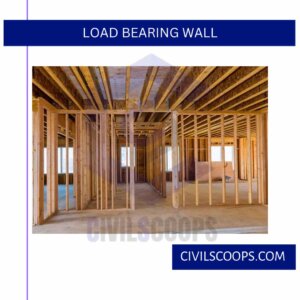
In that type of wall, there are no beams and columns present building. So the wall carries all the dead and life load of the roof slab.
That’s why it’s called the load-bearing wall. Which will be discussed below in this article
2. Non Load Bearing Wall or Drop Wall:
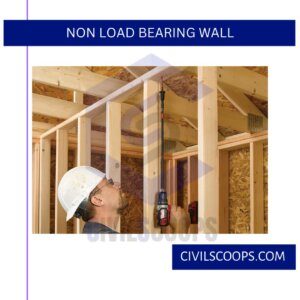
Here, the wall does not carry the load of slabs, but it only provides for partition, security, and privacy purposes. Here all the slab loads are carried by beams and columns.
On the other hand, non-load-bearing walls are placed inside the house and do not support any structural weight of the building.
They don’t bear any additional weight of the house’s structure other than their own. If the joists and rafters run parallel to the wall, they are often considered as non-load-bearing walls.
3. Shear Wall:

This type of wall is constructed near the lift pit, staircase, water sump, etc. It resists two pressure wind pressure and soil pressure or wind pressure and water pressure.
It also resists external lateral forces like earthquakes, wind, etc.
4. Retaining Wall:

This type of wall is made to maintain the unequal level of the ground surface. It retains the soil after artwork to prevent landslides.
The retaining wall is made of RCC OR CRS. There are different types of retaining walls present, they are-
- Gravity Retaining Wall
- Reinforced Retaining Wall
- Brick Masonry Retaining Wall
- Stone Masonry Retaining Wall
5. Brick Masonry Wall:

This type of wall is constructed of bricks. Bricks are joined with the help of cement or mortar. The thickness of the brick masonry wall is 10 inches on the outside and 5 inches on the inside wall.
Brick masonry is a highly durable form of construction. It is built by placing bricks in mortar in a systematic manner to construct a solid mass that withstands exerted loads.
There are several types of bricks and a number of mortars that can be used to construct brick masonry.
6. Rubble Stone Masonry Wall:
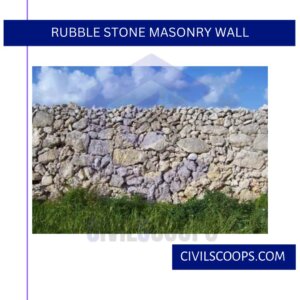
This type of wall is constructed with regular types of stone blocks or irregular or random size stone blocks. This is used in the abutment wall of the bridge, boundary wall, compound wall, etc.
7. Core Wall:

This wall is constructed from the foundation of the building and height up to the building. This type of wall acts as a column and shear wall.
It resists external lateral forces like wind, earthquakes, etc. It is constructed exactly in the center of the building to resist the torsion effect also.
8. Precast Wall:

The precast wall is a ready-made product made in the factory, and you just install it on the site. Now it’s very popular, but it requires more experienced labor than the regular one.
9. Parapet Wall:
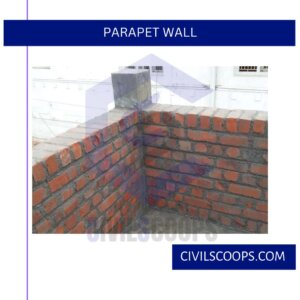
It’s also a boundary wall that is constructed on the roof for safety purposes. The height of this type of wall is 3m.
10. Boundary Wall:
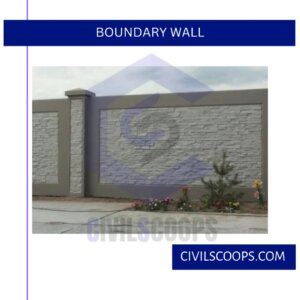
This type of wall is constructed around the building to show the boundary of that plot or area.
11. Reinforced Brick Wall:
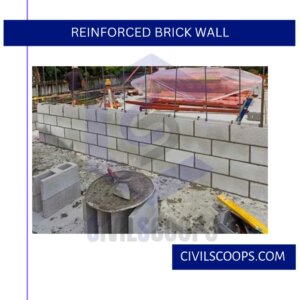
This type of wall is constructed where tensile force is acted. The reinforcement is required in horizontal and vertical.
Horizontal reinforcement is provided in every third or fourth course. Sometimes hoop iron reinforcement is provided. It’s dipped in tar to increase its resistance against rusting.
12. Cavity Wall:
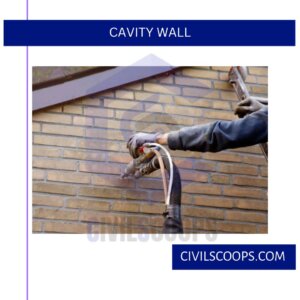
This wall is constructed into two parts inner and outer, with a cavity of 50-100mm. The thicker wall is inside the room, and the thinner one is outside of the building.
A thick wall carries all the load of the slab, and the outer wall resists external moisture and other effects.
It’s necessary to tie the two parts at a distance of 900mm apart vertically and 450mm horizontally.
Types of Load Bearing Wall
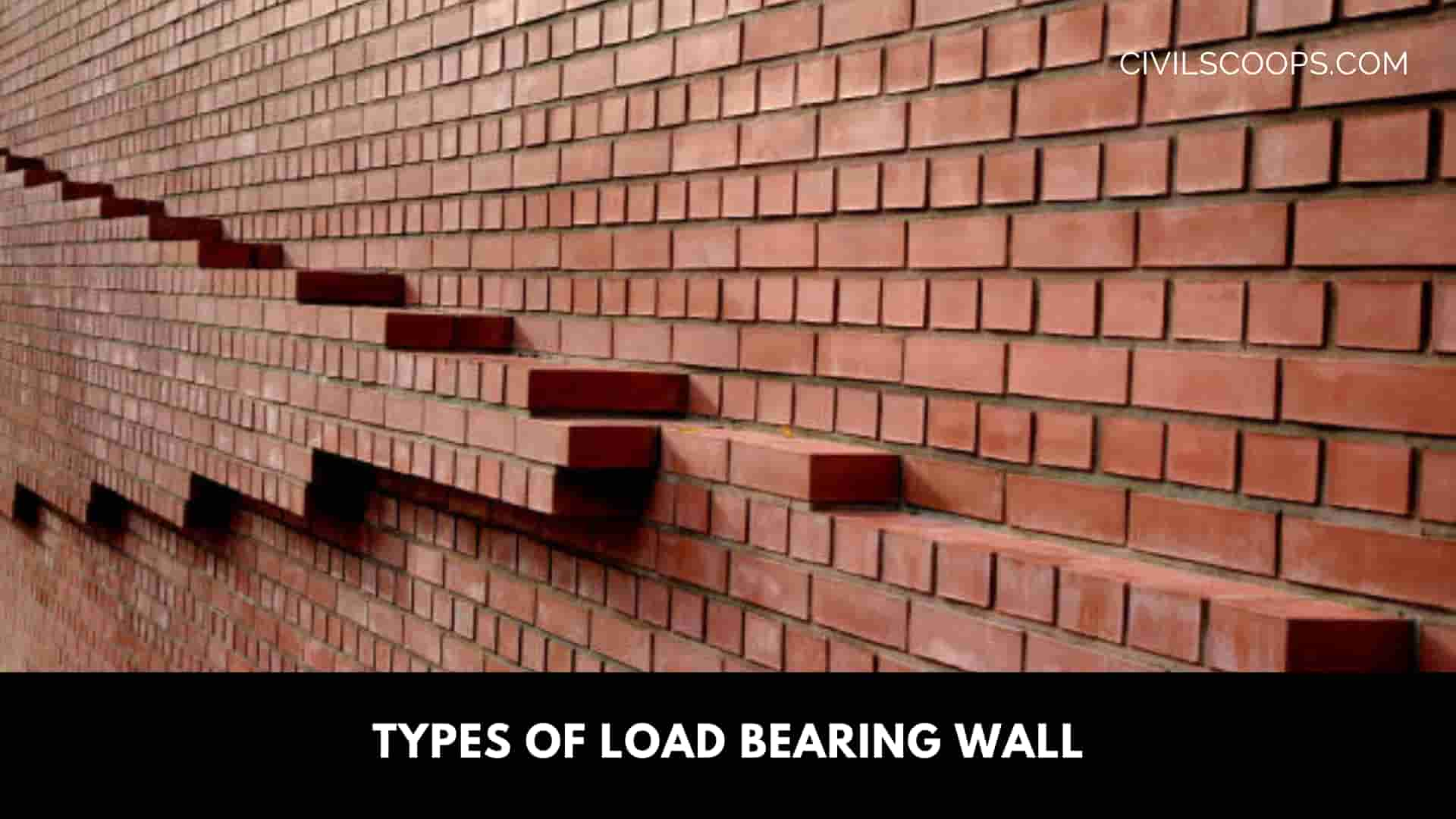
Load-bearing walls are the types of walls that carry the roof slab load and upper loads of floors. There are mainly six types of Load-bearing walls, they are-
- Precast Concrete Wall.
- Retaining Wall.
- Masonry Wall.
- Pre Panelized Load Bearing Metal Wall.
- Engineering Brick Wall.
- Stone Wall.
1. Precast Concrete Wall:
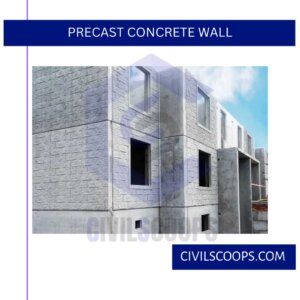
This type of wall is used for its durability and huge strength. This type of wall is easy to install it provides huge safety.
This is precast concrete that is manufactured in a factory and then cured & transported to the site. Some characteristics of this type of wall are-
- Protection
- Durability
- Thermal Resistance
- Moisture Resistance
- Fire Safety
2. Retaining Wall:
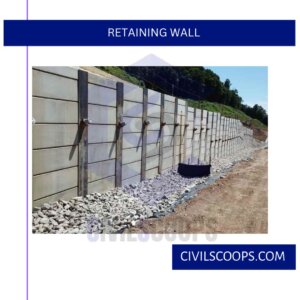
Retaining walls are relatively rigid walls used for supporting soil laterally so that they can be retained at different levels on the two sides.
Retaining walls are structures designed to restrain soil to a slope that it would not naturally keep to (typically a steep, near-vertical, or vertical slope).
This type of wall is made to maintain the unequal level of the ground surface. It retains the soil after artwork to prevent landslides.
The Retaining wall is made of RCC OR CRS. The Retaining wall is constructed to retain the lateral pressure of soil and holds the materials.
The retaining wall provides support thus, it is also called a breast wall or resentment wall. there are different types of retaining wall are present, they are-
- Gravity Retaining Wall
- Reinforced Retaining Wall
- Brick Masonry Retaining Wall
- Stone Masonry Retaining Wall
3. Masonry Wall:
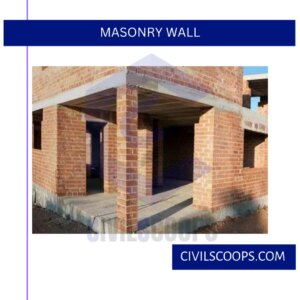
Masonry wall has great architectural beauty, and it provides the required strength. It’s good for fire resistance and controls the inner and outer temperature of rooms properly.
Masonry walls are the most durable part of any building or structure.
Masonry is the word utilized for development with mortar as a coupling material with singular units of blocks, stones, marbles, rocks, solid squares, tiles, and so forth.
Mortar is a blend of restricting material with sand.
4. Pre Panelized Load Bearing Metal Wall:

It is used for building exterior wall cladding. The metal can be stainless steel, copper, or aluminum. It supports gravity, seismic, and wind loading.
This type of wall is mainly used in the exterior wall and is made of aluminum, steel, copper, etc. It’s good to resist wind and seismic load.
5. Engineering Brick Wall:
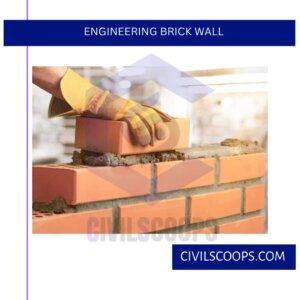
Traditionally, Engineering bricks are used where in construction where strength and resistance to water and frost attack are important.
Some common application examples are retaining walls, damp-proof courses, manholes, sewers, and general ground works.
This types of brick are more useful from a practical point of view. It has good architectural beauty as it has a good external finish. This Is extremely good for frost attacks.
6. Stone Wall:
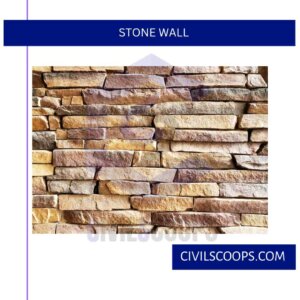
It’s one of the ancient types of load-bearing wall. It’s a heavy type of structure, and stones are joined by cement mortar or Kime mortar.
Different Types of Brick Bond
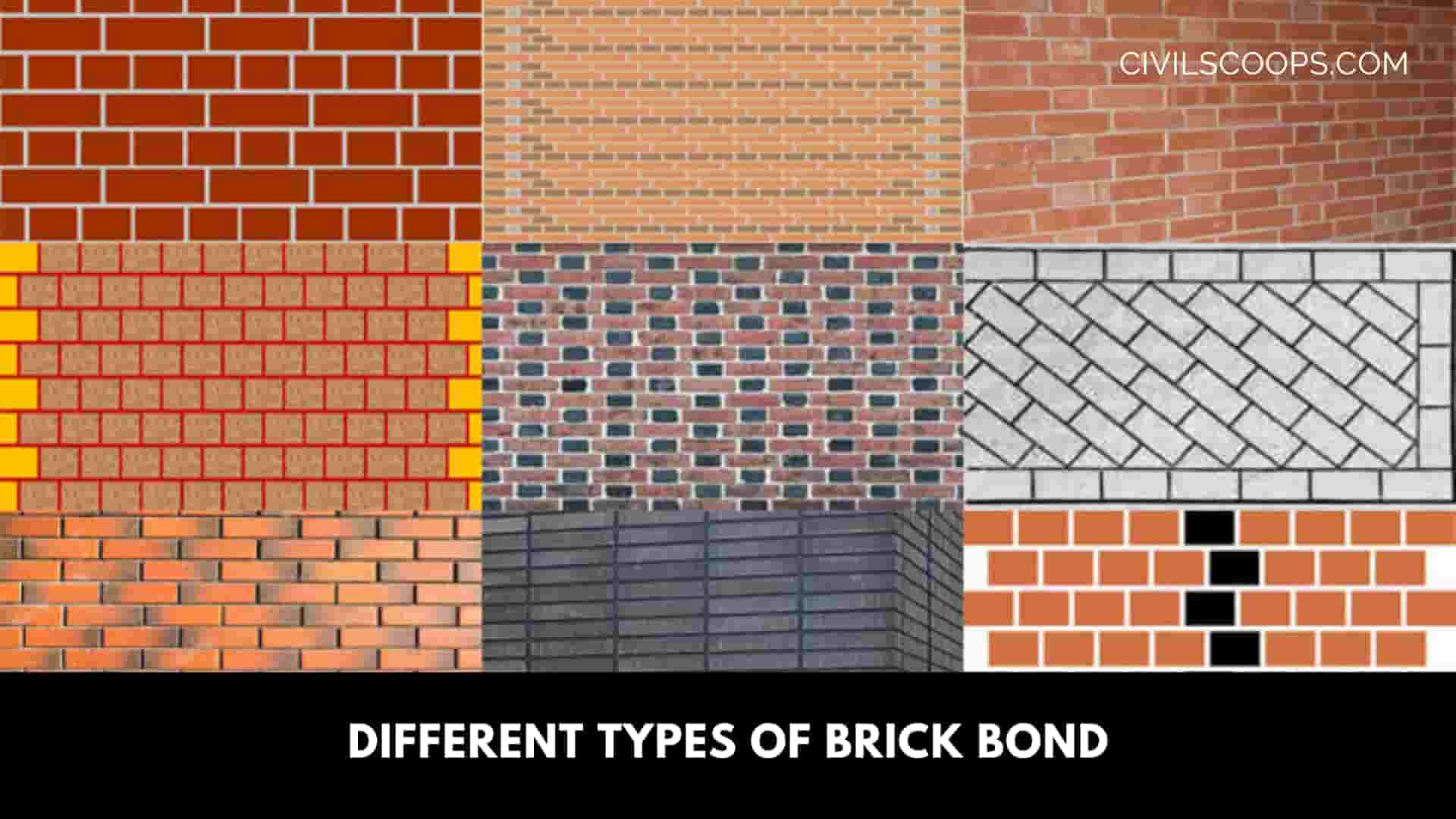
In the brick masonry wall, we observe some bonds in the masonry structure. Those bonds are-
- Stretcher Bond
- Header Bond
- English Bond
- Flemish Bond
- Dutch Bond
1. Stretcher Bond:
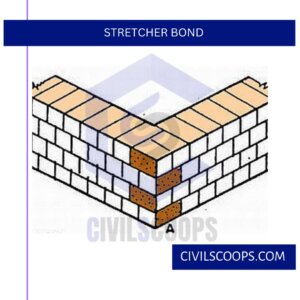
The Stretcher bond is one of the most common bonds. It is easy to lay with little waste and composed of stretchers set in rows, offset by half a brick.
A pattern made up of rows of stretchers with each stretcher centered on the stretcher below it. All joints run vertically down the wall.
In this type of bond, all bricks are arranged in a stretcher course. In the broken joint, we use ½ brickbats. This type of wall is constructed as a partition wall.
2. Header Bond:
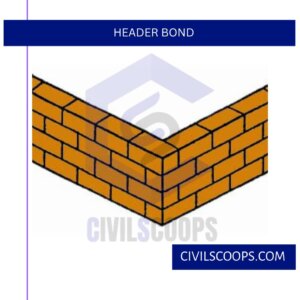
In this type, all bricks are arranged in the header arrangement. This type of bond is used where walls are one brick thick.
3. English Bond:
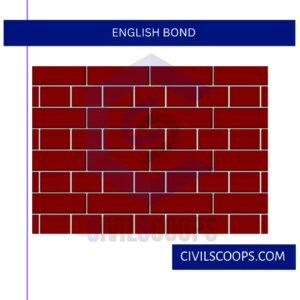
This bond is a mixture of header and stretcher bonds. This is the strongest type of wall and is used in walls of all thicknesses.
4. Flemish Bond:

The Flemish bond is an alternative header and stretcher. This is classified as
- Double Flemish Bond
- Single Flemish Bond
5. Dutch Bond:
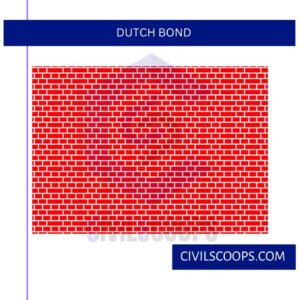
English and Dutch bonds are the particular patterns of laying bricks for constructing a wall. English Bond a bond used in brickwork consisting of alternate courses of stretchers and headers.
Dutch bond is created by laying alternate headers and stretchers in a single course. This is near about the same as the English bond consisting of a header and stretcher. The one difference is that 3/4th bat in a stretcher course is used.
[su_box title=”FAQ” style=”default” box_color=”#333333″ title_color=”#FFFFFF” radius=”3″ class=”” id=””]
Types of Wall
- Load bearing wall.
- Non-load bearing wall.
- Cavity wall.
- Shear wall.
- Partition wall.
Parapet Wall
parapet, a dwarf wall or heavy railing around the edge of a roof, balcony, terrace, or stairway designed either to prevent those behind it from falling over or to shelter them from attack from the outside.
Types of Retaining Wall
- Gravity retaining walls.
- Cantilever retaining walls.
- Embedded retaining walls.
- Reinforced soil retaining walls.
What Are Interior Walls Made Of?
Two of the most common forms of interior wall materials are plaster and drywall. Plaster has been used since ancient times. The earliest plaster was usually made of lime, sand, animal hair, and water.
What Are the Different Types of Interior Walls?
Interior wall finishes: wall plaster, drywall, paneling, brick, stone.
What Is the Cheapest Interior Wall?
If you intend to maximize the cost of wall covering in the cheapest possible way, we recommend you use plywood. They’re accessible, affordable and straightforward to assemble. Plywood is a wall covering material that’ll not only save you money but time when remodelling your wall.
What Sticks to Brick Walls?
Products like Loctite PL 500 Landscape Block Adhesive, which can be applied in all kinds of weather and bonds wet or dry, are specially formulated for use as a landscape brick glue.
What Plaster to Use on Brick?
For brick, a masonry-based plaster must be used; interior walls will require a gypsum-based plaster, whereas exterior walls will require a plaster that is cement-based. The mixture should be thick but easily spreadable with the trowel.
What Happened at Stonewall?
The June 1969 riots at New York City’s Stonewall Inn marked a raucous turning point in the fight for LGBTQ rights. On a hot summer night in 1969, police raided the Stonewall Inn, a bar located in New York City’s Greenwich Village that served as a haven for the city’s gay, lesbian and transgender community.
What Is Glass Wall?
glass wall. noun [ C, usually singular ] HR, WORKPLACE. something that prevents someone from doing a different job or doing their job more effectively: The bank’s president claimed that senior managers erected a glass wall that blocked his efforts to make the bank a more effective institution.
What Type of Plywood for Interior Walls?
The best type of plywood to use indoors is either Oak or Birch.
What Is a Cinder Block Wall?
A concrete block wall is a wall made up of standard size concrete blocks. The standard size is 8 inches, however, depending on the design parameters and standards set by an engineer for the concrete structure, the block sizes may vary.
What Is the Cost of a Cinder Block Wall?
Cinder block walls cost about $10 to $30 per square foot for the materials, like blocks and mortar, plus professional installation. The materials cost about $3 to $6 per square foot. A professionally installed 8-by-15-foot cinder block wall may cost $1,200 to $3,600, while a DIY wall may cost around $360 to $720.
What Is a Non Load Bearing Wall?
Non-load-bearing walls carry only their own weight and may be any one of the types discussed under load-bearing walls. This type of wall is used to close in a steel or concrete frame building. It is usually carried by supports, normally steel shelf.
How to Tell What Walls Are Load Bearing?
If a wall has a beam, column or other wall directly below or following its same path, it’s a load-bearing wall. Walls more than 6 inches thick are usually load-bearing walls. Walls in the center of a building usually support most of the roof’s weight.
What Happens If You Remove a Load Bearing Wall?
Removing a load-bearing wall can cause structural damage to your home, including drywall cracks, expensive beam replacement, and the cost of consulting with a professional structural engineer.
Shear Wall
A shear wall is a general term for a wall that is designed and constructed to resist racking from forces such as wind using masonry, concrete, cold-formed steel, or wood framing. Shear walls significantly reduce the sway of a structure to reduce damage to the structure and its contents.
Dutch Bond
Dutch bond – is created by laying alternate headers and stretchers in a single course. The next course of brick is laid such that header lies in the middle of the stretcher in the course below, i.e. the alternate headers of each course are centered on the stretcher of course below.
Cost of Brick Wall
The national average for a standard brick wall is $5,000, with the price per square foot falling between $10 and $45. Homeowners often spend between $2,410 and $8,050 for brick wall construction.
What Is Core Wall?
Core wall—the structure that surrounds the protoplast or core of the endospore. From: Encyclopedia of Infection and Immunity.
What Is Precast Wall?
Precast concrete wall panels provide a single cladding assembly built by one certified manufacturer in a controlled environment. They allow for quick and straightforward exterior finish wall application for a building. Durable precast concrete panels provide good structural framing, and heat, air, and moisture control.
What Is Boundary Wall?
In other words, a boundary wall is a fence constructed to separate the land between two adjoining landowners. Every state has variations on the Fencing Act, so to help you understand your requirements, we’ve put each state’s regulations together here.
What Is the Purpose of a Cavity Wall?
The purpose of a cavity wall is to help prevent rain water from penetrating through the outer wall to the inside of the property. However, as this method of construction leaves a gap (cavity) in-between the two walls a great deal of heat can be lost.
Precast Concrete Wall
Precast concrete walls are constructed by casting concrete in a reusable wall mold or form which is then cured in a controlled environment, transported to the construction site and lifted into place. The main function of the precast walls is to speed up the construction process.
How Much Does a Precast Concrete Wall Cost?
Generally, you can expect a precast concrete wall to cost between $25 and $40 per square foot. You should budget between $150 and $320 per linear foot (for a piece 6′ to 8′ tall). The price of precast concrete per cubic yard ranges from $360 to $1200.
Masonry Wall
Masonry walls are the most durable part of any building or structure. Masonry is the word utilized for development with mortar as a coupling material with singular units of blocks, stones, marbles, rocks, solid squares, tiles, and so forth.
What Is Stretcher Bond?
Stretcher bond, also called as running bond, is created when bricks are laid with only their stretchers showing, overlapping midway with the courses of bricks below and above. Page 2. Stretcher bond in the brick is the simplest repeating pattern.
What Is English Bond?
English bond consists of courses of stretchers (sides of bricks) alternating with courses of headers (ends of bricks) throughout a wall surface. We see a typical example of early English bond in the walls of a row of post-Medieval Hanseatic League warehouses in King’s Lynn, a historic port in Norfolk, England.
What Is Flemish Bond Brickwork?
Flemish bond. noun. a bond used in brickwork that has alternating stretchers and headers in each course, each header being placed centrally over a stretcher.
[/su_box]
[su_note note_color=”#F2F2F2 ” text_color=”#333333″ radius=”3″ class=”” id=””]
Like this post? Share it with your friends!
Suggested Read –
- 20 Types of Construction Beam & Their Uses
- 14 Types of Plaster Finishes (List of Plaster Finishing)
- All About SBC of Soil | What Is SBC of Soil | Safe Bearing Capacity of Soil
- What Is Admixture | 26 Types of Admixtures | Advantages & Disadvantages of Admixture
- What Is Pneumatic Structures | Types of Pneumatic Structures | Advantages & Disadvantages of Pneumatic Structures | Uses of the Pneumatic Structures
[/su_note]
Originally posted 2023-03-22 13:39:08.
